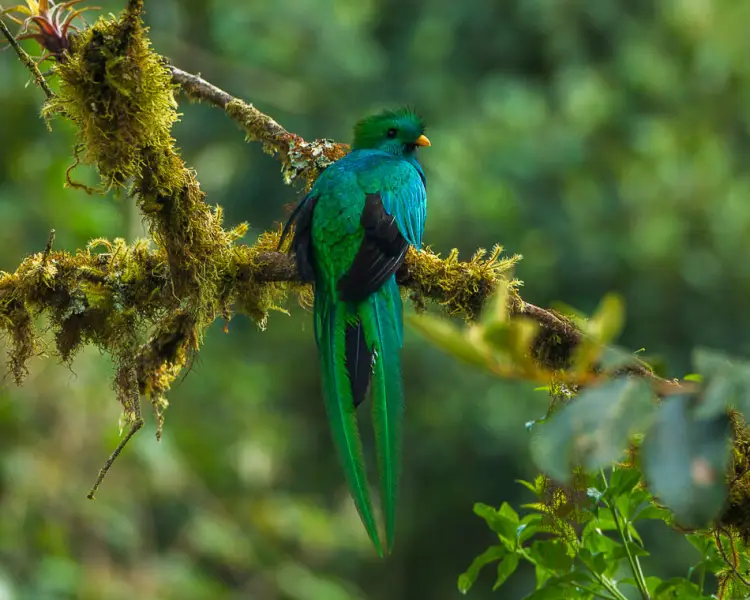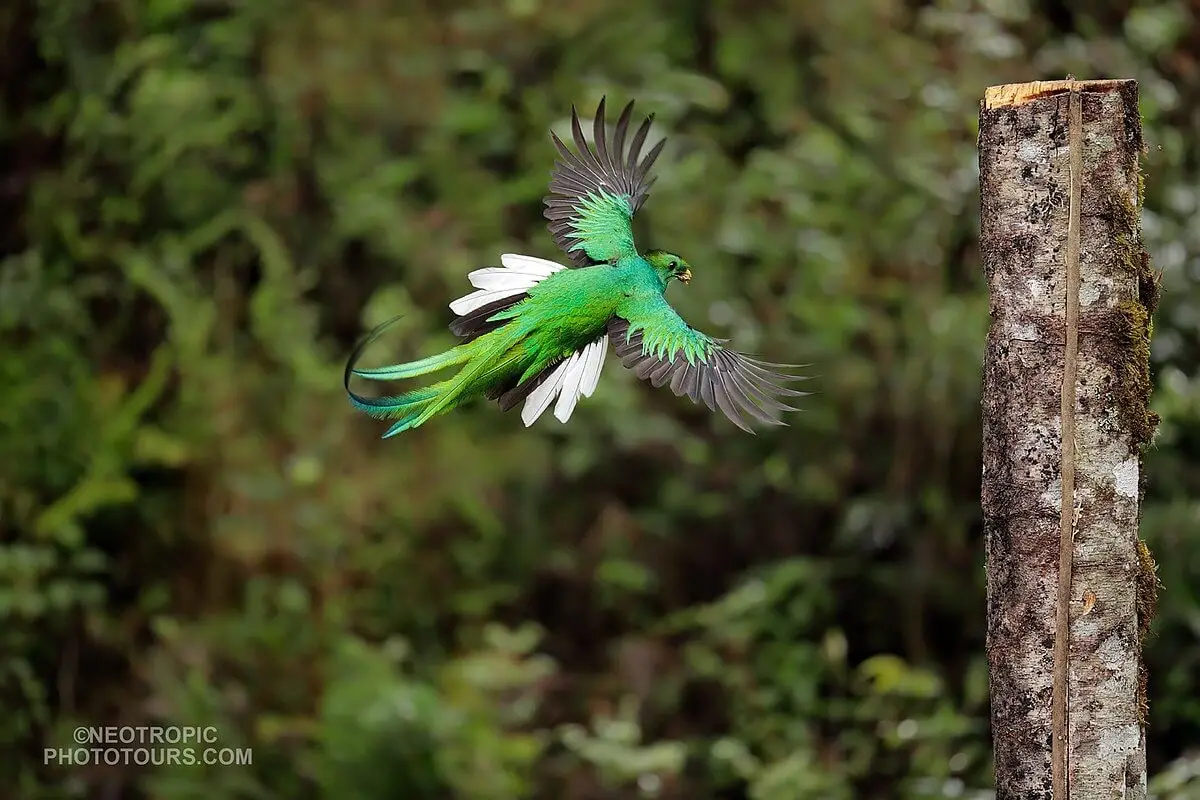
The stunning quetzal bird (Pharomachrus mocinno ) is a petite species that can be found in southern Mexico and Central America. It has two acknowledged subspecies, namely P. m. mocinno and P. m. costaricensis. These birds inhabit tropical forests, particularly montane cloud forests, and belong to the Trogonidae family. Similar to other quetzals, the resplendent quetzal is an omnivore, with its diet primarily consisting of fruits from the Lauraceae family. However, it occasionally preys on insects, lizards, frogs, and snails as well.




The quetzal is a well-known species with vibrant and intricate feathers that differ greatly between males and females. The males have shiny green feathers, a red lower breast and belly, black inner wings, and a white undertail, while the females have a shorter tail and duller colors with grey lower breasts and bellies and bronze-green heads.
These birds create their nests by carving out holes in decaying trees or using existing ones made by woodpeckers. They share the responsibility of incubating their eggs, with males taking on daytime shifts and females taking over at night. The female usually lays one to three eggs, which hatch in approximately 17 to 19 days.
As altitudinal migrants, quetzals move from the forest slopes to the canopy during breeding season, which varies depending on location but typically occurs from March to August.




